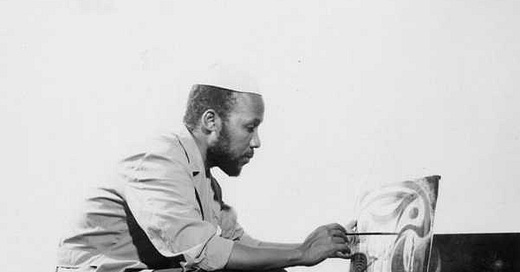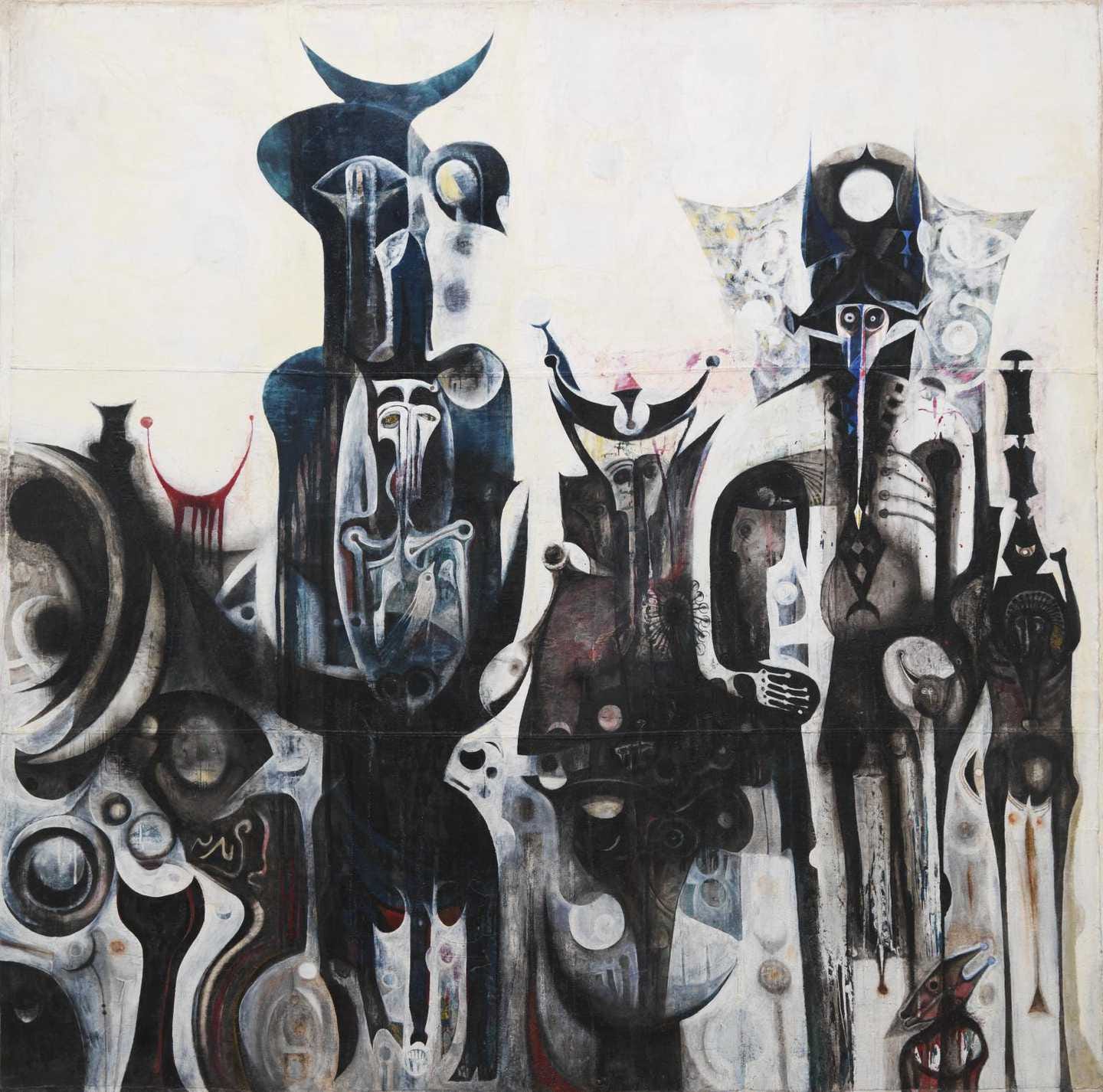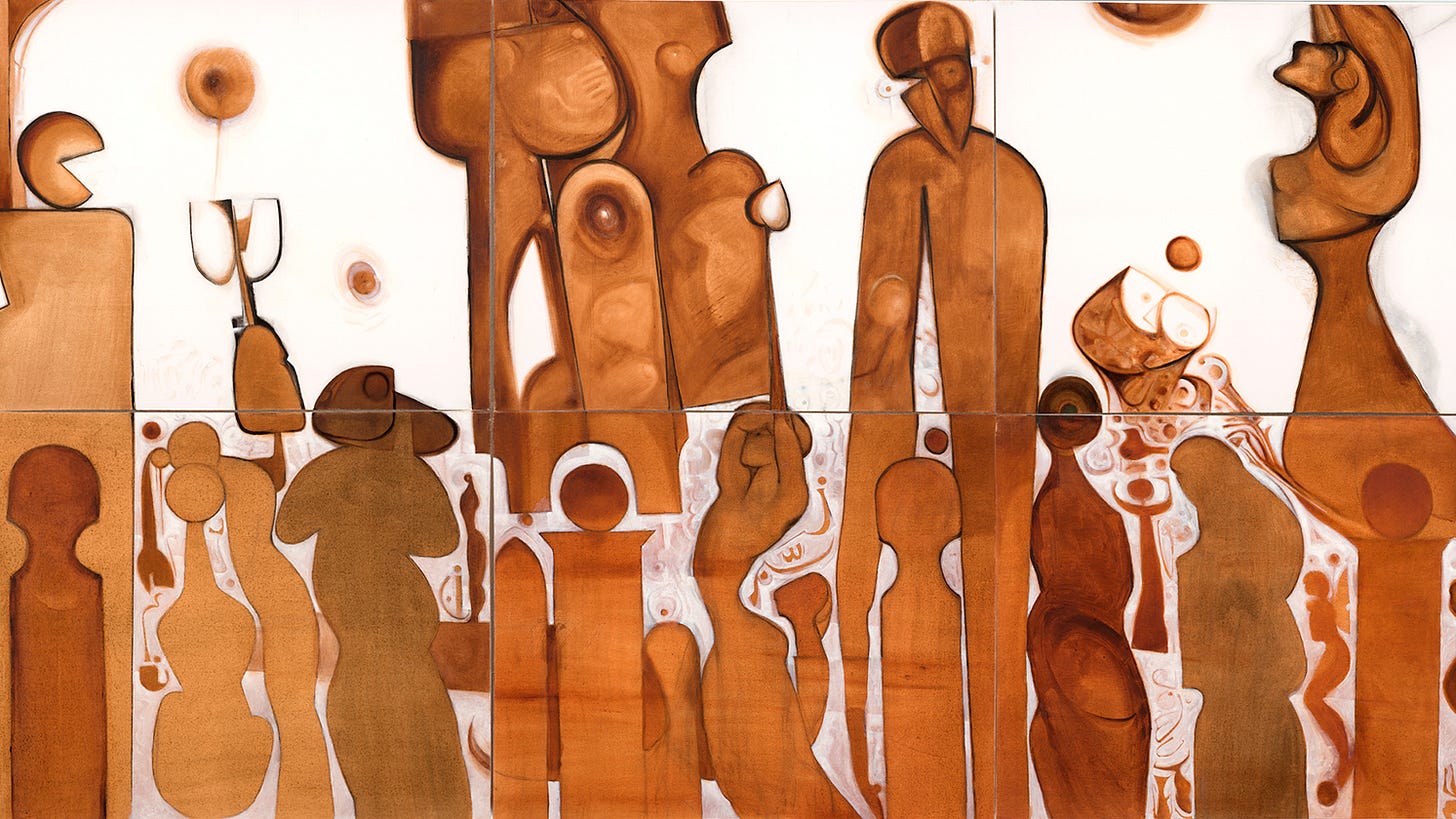Ibrahim El-Salahi
During the mid-20th century, in Khartoum, Sudan, the artist and lecturer Osman Waqialla encouraged his students at the College of Fine and Applied Art to develop a new visual vocabulary that found its sources in both Arabic calligraphy and African masks, the Arabized north of Sudan and the more traditional African south of the country. His students would take Waqialla’s ideas and use them to challenge their colonial inheritance. Stitched-cloth canvases, Islam’s rich verbal history, African mythology, the earth tones of the Sudanese landscape, and Western abstraction would all coalesce in the work of what came to be called the Khartoum School. Each of these students, which included Ibrahim El-Salahi, Ahmad Mohammed Shibrain, and Majzub Rabbah, established their own unique and dynamic aesthetic in painting, sculpture, printmaking, and textiles. But all their work sought to express the polycultural inheritance of Sudan.
Unfortunately those distinct cultures would never find a way to coalesce in Sudan. As in many African countries, there was a brief and extraordinary cultural florescence in Sudan following independence, and then terrible dictatorships, civil wars, and genocide.
Ibrahim El-Salahi was to become the most well-known of the Khartoum School. After independence, he became the head of Sudan’s Department of Culture. In the late 1970’s, however, many intellectuals of the Left were attacked and repressed by the government. El-Salahi was imprisoned without trial. Eventually he was allowed to go into exile.
Reborn Sounds of Childhood Dreams, I. Painted on hand-woven textile.
El-Salahi utilizes a mesmerizing palate. Even when working with dun and umber, he allows every color to glow, to reach into its hidden reds and yellows. But part of what makes his paintings so provocative is his extraordinary draftsmanship. Many of his figures are like ancient figurines, finally given—or gaining for themselves—living bodies.
Flamenco Dancers
Blue is rarely seen in his work, but when it is, El-Salahi makes the most of its potential for haunting:
Keep reading with a 7-day free trial
Subscribe to Continuum to keep reading this post and get 7 days of free access to the full post archives.






